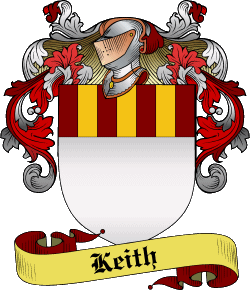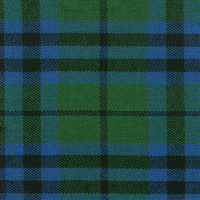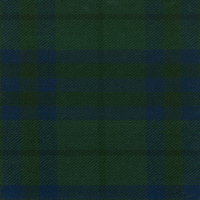Keith

Purchase Heraldry Products
Download Now!

Surname: Keith
Branch: Keith
Origins: Scottish
More Info: Scotland
|
|
Background: The Keiths were one of the most ancient and powerful of the Celtic families of which the earliest record is one Hervey Keith who was Marischal in the reign of Malcolm IV in the 12th century. At Bannockburn in 1314, Sir Robert Keith the Marischal led the Scots cavalry of ponies successfully against the great shire horses of the English. His great-grandson, Sir William founded Dunnottar Castle on the headland precipice south of Stonehaven. The family continued to grow in wealth and importance and in 1458 the hereditary office of Marischal was made into an Earldom, the 2nd Lord then became Earl Marischal. By the 16th century the Keiths were so powerful that it was said that the Earl could travel from Berwick to John O' Groats stopping each night on his own property. The 4th Earl entertained Mary Queen of Scots at the castle and her son James VI held a Privy Council there and appointed the 5th Earl to stand as proxy for him at his marriage to Anne of Denmark, he also founded Marischal College, Aberdeen in 1593. The 9th and last Earl Marischal and his brother were ardent Jacobites and fought with the Stewarts in 1715. They had to escape after defeat to the continent where James became a Field Marshall for Fredrick the Great. The Keiths were also involved in feuds especially after they took possession of the lands in Caithness, with their neighbours there, the Gunns. In the 15th century in an attempt at reconciliation, the two clans planned to meet with twelve clansmen each. However the Keiths arrived with two men on each horse and attacked the Gunns while they were at prayer. The Gunns retaliated when they slaughtered Keith of Ackergill and his ten of his men at Drummoy. (In 1978, the Chief of Clan Keith and the Commander of Clan Gunn signed a peace treaty at the site of the Chapel of St. Tayrs, ending the feud between the two clans which began in 1478). Upon the death of George, 9th Earl in 1778 the forfeited estates passed to Lord Falconer. In 1919 Dunnottar was purchased by Viscountess Cowdray who repaired the ruins which are now open to the public.
|
 Motto: Motto: Dexter, Quae amissa salva, What has been lost is safe. Arms: Quarterly, 1st & 4th, Argent, on a chief Gules three pallets Or (Keith); 2nd, Azure, a falcon displayed between three mullets Argent, on his breast a man's heart Gules (Falconer of Halkerton); 3rd, per pale engrailed Gules and Or, a boar passant counterchanged (Baird of Ury); overall on an escutcheon Gules a sceptre and sword in saltire with an Imperial Crown between the upper corners all Proper, within an orle of eight thistles slipped near the head Or, ensigned with an Earl's coronet (Augentation for services in preservation of the Honours of Scotland) . Crest: Dexter, on a Wreath Or and Gules, a noble lady from the middle richly attired holding in her right hand a garland of laurel Proper (Earldom of Kintore); sinister, out of a Crest Coronet Or, a roebuck's head Proper, attired Or (Keith). Supporters: (on a compartment embellished with roses Argent) Two men in complete armour Proper each holding a spear Gules, pointed Argent in posture of sentinels. Badge: Sinister, out of a Crest Coronet Or, a roebuck's head Proper, attired Or. Plant: White Rose. View the Heraldry Dictionary for help.

A warrior of the Chatti slew the Danish General Camus at the Battle of Barrie in 1010, for which valour Malcolm II dipped three fingers into the blood of the slain and drew them down the shield of the warrior, thereafter named Marbhachair Chamuis, or ‘Camus Slayer’. Ever since then, the chief of the Keiths has borne on his arms the same three red lines. This is depicted as early as 1316 on the seal of Sir Robert de Keth, marischal. Malcolm’s victory at the Battle of Chathem in 1018 brought him into possession of Lothian, and Camus Slayer subsequently held the Lothian lands of Keth from which his progeny took their names. A Norman adventurer, Hervey, married the native heiress of Marbhachair and received a charter for the lands of Keth from David I around 1150. Hervey’s son was styled ‘Marischal of the King of Scots’ in a charter of 1176, which office the family held until the attainder of George, tenth Earl Marischal. The Marischal was custodian of the royal regalia and charged with the safety of the king’s person within Parliament.
Robert the Bruce granted Halforest, the Aberdeenshire royal forest, to his friend, Sir Robert de Keth, in 1308, and it was there that the Marischal built his castle. His nephew, Sir William of Galston, returned Robert’s heart to Melrose Abbey after the demise of the Black Douglas at the hands of the Moors in Spain. By a charter of Robert in 1324, the office of marischal became hereditary in the family of Sir Robert de Keth, the cavalry commander at Bannockburn, conditional upon their bearing the ancient arms inherited from Marbhachair Chamuis. The young David II was escorted by Sir Robert the Marischal when he fled to the safety of France during Edward Balliol’s usurpation.
Sir William the Marischal (1350–1407) added great estates in Buchan, Kincardine and Lothian to his existing patrimony when he married the heiress of Sir Alexander Fraser, the High Chamberlain. His brother, John, married the Cheyne heiress, bringing to the Keiths the massive Inverugie estate with its castle which later became the chief’s seat of the earls marischal. Three of Sir William’s offspring married children of Robert II, while another daughter married Sir Adam Gordon, progenitor of the Earls of Huntly, and to whom she took substantial estates, forming the foundations of that great family.
The third Lord Keith was elevated to the peerage as Earl Marischal in 1458, the only peer to be styled by his great office of state. The third Earl Marischal, with the Earl of Glencairn, invited the reformer John Knox to return to Scotland in 1559, while the fourth Earl founded Marischal College in Aberdeen, endowing it with the Greyfriars lands and introducing radical teaching protocols which were later to be adopted universally. George, the fifth Earl Marischal and the wealthiest nobleman in the land, undertook the embassy to Denmark which culminated in the marriage of James VI to Princess Anne of Denmark.
After the coronation of Charles II in 1651 at Scone, William, the seventh Earl, was captured and imprisoned in the Tower of London, where he remained until the Restoration, when the king appointed him a Privy Councillor and later Lord Privy Seal, in recompense for the great sufferings he and his family had endured in the royal cause. There were rewards for those who had hidden the Scottish crown jewels on the Keith lands after Charles’s coronation: Ogilvie of Barras was created a knight baronet, and Marischal’s brother, John, became Knight Marischal and later Earl of Kintore, with an augmentation to his arms consisting of the royal crown, sword and sceptre. Kintore’s nephew, the eighth Earl Marischal, was appointed a Knight of the Thistle by James VIII, the ‘Old Pretender’.
The Keith family supported the Jacobite cause in the Forty-five, for which the tenth Earl and his brother, James, forfeited their lands, castles and titles. The Keith brothers thereafter played a part in Continental affairs during the eighteenth century. The earl was one of the very few Jacobite Knights of the Garter and also received Prussia’s highest order, the Black Eagle. James was invested by the Tsarina with the Russian Imperial Order of St Andrew.
Keith of Ravelston and Dunnottar was recognised as a representer of the Marischals by the Lord Lyon in 1801. His nephew was dubbed Knight Marishal for George IV’s visit to Edinburgh in 1822. The flamboyant ninth Earl of Kintore, who was Governor General of South Australia from 1889 to 1895, decimated the Kintore estates. The twelfth Earl of Kintore promoted the clan internationally and was instrumental in appointing a hereditary sennachie to preserve the family’s history and traditions. The thirteenth and present Earl continues to reside on the Keith Hall estate in Aberdeenshire.
Name Variations: Achindachy, Astine, Aston, Austen, Austie, Austin, Cate, Dick, Dickson, Dickison, Dicson, Dixon, Dixson, Falconer, Falconor, Faulkner, Harvie, Harvey, Harvie, Hervey, Haxton, Hurrie, Hurry, Keath, Keith, Keech, Keeth, Kite, Lumgain, Lumgaine, Lumgair, MacDick, MacDicken, MacDickin, MacDickens, MacDickins, MacDickie, MacDicky, MacDickson, MacGeath, MacKeetch, MacKeeth, MacKeith, MacKeithan, MacKeth, Mackett, MacNeithan, Marshall, Urrie, Urry.
References:One or more of the following publications has been referenced for this article.The General Armory; Sir Bernard Burke - 1842.
A Handbook of Mottoes; C.N. Elvin - 1860.
Scottish Clans and Tartans; Neil Grant - 2000.
Scottish Clan and Family Encyclopedia; George Way of Plean and Romilly Squire - 1994.
Scottish Clans and Tartans; Ian Grimble - 1973.
World Tartans; Iain Zaczek - 2001.
Clans and Families of Scotland; Alexander Fulton - 1991.

|
|

The beautiful heraldry artwork for this family is available to purchase on select products from the Celtic Radio Store. We look forward to filling your order!

|
|

|

Ancient | 
Modern |
|
|
|